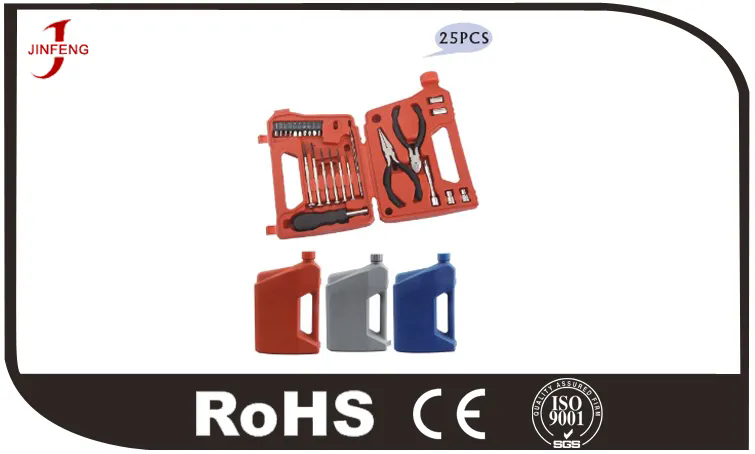Common Types of Hand Tools
2024-07-31
Hand tools are manually operated tools used for a wide range of tasks in construction, repair, maintenance, and crafting. Unlike power tools, hand tools do not require electricity or batteries, making them versatile and essential in various trades and hobbies. Here's a comprehensive overview of common hand tools and their uses:
Common Types of Hand Tools
1. Cutting Tools
- Hammer: Used for driving nails, breaking objects, or shaping materials. Variants include claw hammers, sledgehammers, and mallets.
- Saw: For cutting wood, metal, or plastic. Types include hand saws, hacksaws, and coping saws.
- Utility Knife: A versatile tool for cutting and trimming materials like cardboard, plastic, and tape.
2. Screwing Tools
- Screwdriver: Used to drive screws into materials. Comes in various types such as flathead, Phillips, Torx, and Allen.
- Allen Wrench (Hex Key): For tightening or loosening hexagonal screws and bolts.
- Nut Driver: A tool with a socket for turning nuts and bolts.
3. Measuring Tools
- Tape Measure: For measuring length, width, and height. Available in retractable and non-retractable forms.
- Ruler/Scale: Used for precise measurements and drawing straight lines.
- Calipers: For measuring internal and external dimensions, as well as depth. Available in digital or dial forms.
4. Prying Tools
- Crowbar (Prying Bar): Used for levering objects apart or removing nails.
- Pry Bar: Similar to a crowbar but generally smaller, used for prying and lifting tasks.
5. Wrenches and Pliers
- Adjustable Wrench: Also known as a crescent wrench, it has a movable jaw to fit various sizes of nuts and bolts.
- Pipe Wrench: Designed for gripping and turning pipes and cylindrical objects.
- Pliers: Include types such as needle-nose, lineman's, and slip-joint pliers, used for gripping, twisting, and cutting.
6. Drilling and Boring Tools
- Hand Drill: A manual tool for drilling holes in wood, metal, or plastic. Uses a rotating mechanism to drive a drill bit.
- Auger: For boring larger holes, especially in wood.
7. Chisels and Planes
- Chisel: A cutting tool used for carving or shaping wood, metal, or stone. Types include wood chisels and cold chisels.
- Plane: For smoothing or shaping wood surfaces. Types include block planes and smoothing planes.
8. Fastening Tools
- Stapler: Used to drive staples into materials, commonly used in upholstery and construction.
- Nail Puller: A tool for removing nails from wood or other materials.
9. Specialty Tools
- Level: Ensures surfaces or installations are perfectly horizontal or vertical.
- Torque Wrench: Used for applying a specific amount of torque to fasteners.
Features to Consider
1. Material: Hand tools are typically made from steel, aluminum, or high-strength composites. The choice of material affects durability and performance.
2. Ergonomics: Look for tools with comfortable handles and grips, especially for extended use, to reduce hand fatigue.
3. Precision: For tasks requiring accuracy, select tools that offer fine control and measurement capabilities.
4. Durability: Quality hand tools are built to withstand heavy use and provide long-lasting performance.
Maintenance and Safety
1. Regular Cleaning: Keep tools clean and free of rust or debris to ensure optimal performance and longevity.
2. Proper Storage: Store tools in a dry place and use tool racks or cases to prevent damage and loss.
3. Safety: Always use hand tools according to their intended purpose. Wear appropriate safety gear such as gloves or goggles when necessary.
4. Inspection: Regularly inspect tools for wear and damage. Replace or repair tools as needed to maintain safety and effectiveness.
Summary
Hand tools are essential for a wide range of applications, from construction and repair to crafting and maintenance. They come in various types, each designed for specific tasks, and their effectiveness relies on factors such as material quality, ergonomic design, and proper maintenance. By selecting the right tools for the job and using them safely, you can achieve precise and reliable results in your work or projects.



